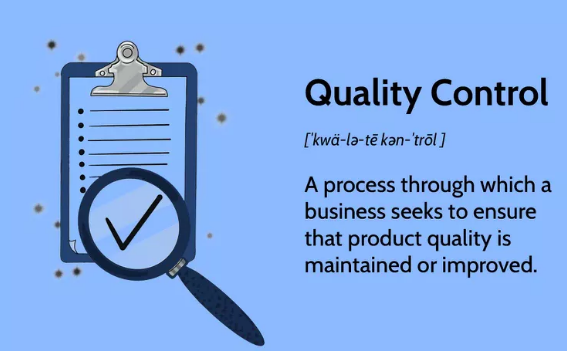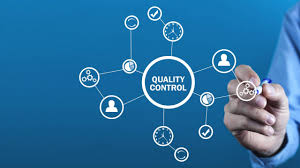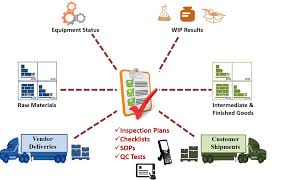our services

Pricing and Valuation Oversight
- Ensuring Accurate Valuation: Product control ensures that the pricing of financial products, such as derivatives, bonds, equities, or structured products, is accurate, reliable, and compliant with accounting standards.
- Mark-to-Market Valuation: Regularly performing mark-to-market or fair value assessments to ensure that the portfolio’s current value reflects market conditions.
- Model Validation: Verifying that the models used for pricing complex financial instruments are appropriate and validated, and any assumptions used in these models are consistent with market conditions.
What is the biggest benefit your customer will get from this? Keep your target audience in mind.

Risk Management
- Risk Identification: Identifying risks associated with trading and financial products, including market risk, credit risk, liquidity risk, and operational risk.
- Hedge Verification: Ensuring that any hedging activities are executed and properly accounted for, to manage the exposure of trading desks or other departments.
- Risk Reporting: Generating and reporting risk metrics (e.g., Value-at-Risk (VaR), stress testing) and ensuring that these metrics are communicated effectively to senior management.
What is the biggest benefit your customer will get from this? Keep your target audience in mind.

P&L (Profit and Loss) Reporting and Analysis
- Daily P&L Reporting: Preparing daily profit and loss reports for trading desks and business units. This includes detailed breakdowns of the gains and losses from various positions.
- Attribution Analysis: Analyzing the sources of profit and loss, including market moves, changes in volatility, and other factors, to determine which trades or strategies contributed to the results.
- Variance Analysis: Investigating and explaining any discrepancies between the expected P&L and the actual P&L, highlighting any anomalies or operational issues.
What is the biggest benefit your customer will get from this? Keep your target audience in mind.

Control and Compliance
- Internal Controls: Implementing strong internal controls to ensure the integrity and accuracy of financial reporting. This includes overseeing compliance with accounting standards, regulatory requirements, and internal policies.
- Audit Support: Supporting internal and external auditors by providing necessary documentation and data for audit purposes, ensuring transparency and regulatory compliance.
- Regulatory Reporting: Ensuring that all regulatory reporting requirements (e.g., financial disclosures, tax filings) are met, particularly in relation to financial products and their valuation.

Reconciliation and Verification
- Transaction Reconciliation: Ensuring that trading positions, trades, and transactions are accurately recorded and reconciled between different systems (e.g., trading systems, accounting systems).
- Price Verification: Verifying that the prices used for product valuations are sourced from reliable, reputable data providers and align with market prices.
- Position Reconciliation: Ensuring that positions in financial instruments are accurately reflected and reconciled between front office (trading), middle office (risk), and back office (operations).

Financial Reporting
- Financial Statements Preparation: Assisting in the preparation of financial statements, including balance sheets and income statements, that reflect accurate values for the organization’s portfolio.
- Disclosures: Providing detailed product-specific disclosures in financial reports, ensuring that stakeholders have a clear understanding of the risks, returns, and accounting treatment of the products held.

Support for Trading and Risk Strategy
- Business Partnering: Collaborating with traders, risk managers, and senior management to provide insights into the financial and risk characteristics of trading strategies and products.
- Product Strategy: Assisting in evaluating the potential risks and returns of new products or trading strategies, ensuring that these align with the company’s risk appetite and financial objectives.
- Advisory Role: Acting as a financial and control advisor to trading desks, offering guidance on optimal product structures, risk management strategies, and operational efficiencies.

Product Control Systems and Tools
- System Development and Maintenance: Helping to develop, implement, and maintain systems for product control functions, such as trade capture, valuation, risk management, and P&L reporting systems.
- Automation and Optimization: Striving to automate manual processes where possible to enhance efficiency, reduce the risk of human error, and improve the overall control environment.

Operational Efficiency and Process Improvement
- Process Optimization: Identifying and implementing improvements to the product control processes, enhancing both operational efficiency and the timeliness of reporting.
- Standardization: Standardizing processes across different product lines or business units to ensure consistency in reporting and control.

Transaction Lifecycle Management
- Trade Life Cycle Management: Overseeing the entire lifecycle of a trade, from execution through to settlement, ensuring that all stages are captured correctly and that the P&L and risk implications are accurately reflected.
- Settlement and Cash Flows: Ensuring that all settlements are processed correctly and that cash flows related to financial products are tracked and reconciled.

Performance Metrics and KPIs
- Performance Monitoring: Tracking and reporting on key performance indicators (KPIs) for trading desks, including profitability, risk-adjusted returns, and operational performance.
- Benchmarking: Comparing product performance to relevant benchmarks, ensuring that trading and investment strategies meet expected returns and risk profiles.
- Settlement and Cash Flows: Ensuring that all settlements are processed correctly and that cash flows related to financial products are tracked and reconciled.
